
Ozempic could make low- or even alcohol-free beer and wine a lot more popular
Companies are expected to continue tweaking their offerings to meet changing consumer preferences in the weight loss drug era

Companies are expected to continue tweaking their offerings to meet changing consumer preferences in the weight loss drug era
Restaurant and food CEOs have been in the spotlight amid the rise of appetite suppressing GLP-1 drugs — first made popular by the diabetes treatment Ozempic. However, the impact of these highly-coveted medications will ripple across a variety of sectors including the alcohol business, according to a recent report by the financial services company Moody’s Ratings.
The ratings agency said that the growing usage of GLP-1 drugs will affect everything from medical devices to food packaging. The exposure will take “years to play out,” primarily driven by lowered demand due to a decrease in “the degree to which the population is overweight,” said Moody’s.
Moody’s anticipates that sales for current market leaders Novo Nordisk’s Ozempic and Wegovy; and Eli Lilly’s Mounjaro and Zepbound could reach $80 billion within the next five years.
The agency also projected different scenarios for the adoption of these drugs. Depending on factors like insurance coverage and how long patients stay on these treatments, up to 30 million Americans could be on a GLP-1 drug by 2030.
Moody’s said it expects companies will “tweak their product offerings and take other steps to limit their exposures” to the potentially negative impacts of GLP-1s on their bottom lines.
For alcohol companies, it could mean an acceleration of the ongoing shift towards lower-calorie products with less or no alcohol.
There is limited evidence that GLP-1s can impact alcohol consumption.
A Morgan Stanley report from earlier this year found that people using GLP-1 drugs reduced their consumption of alcohol while on these medications.
The investment bank surveyed about 300 GLP-1 users about their consumption habits. About 56-62% of alcohol drinkers on GLP-1s reported consuming less alcohol since starting the medications, with about 14-18% cutting their alcohol consumption entirely.
The analysts noted they were “cautious about drawing conclusions” from their survey about the impact of GLP-1 drugs on addictive behaviors.
More recently in June, investigators from the University of North Carolina presented results from a small study at the College on Problems of Drug Dependence’s annual meeting. Their research found that people with alcohol use disorder drank less after taking semaglutide — the active ingredient in Novo Nordisk’s Ozempic– compared with people who took a placebo.
Professor Christian Hendershot, who led the trial, told Bloomberg that the drug’s effect was stronger than any approved medications for alcoholism. The study has not yet been published in a peer-reviewed journal.
But for now, it seems like Big Pharma isn’t especially interested in pursuing this use of GLP-1s. Novo Nordisk is the only pharmaceutical company that is publicly studying alcohol consumption, in a trial examining Wegovy’s effect on liver damage.
Although there could be a growing population of people who no longer want to consume alcohol, Moody’s analysts doesn’t see this as an existential threat to the industry.
“For the folks that are using these drugs, they probably will consume less alcohol, just like they consume less food,” Linda Montag, senior vice president for Moody’s Ratings, told Quartz. “And that’s something that companies will have to adjust and adapt to.”
However, Montag said she doesn’t think this will be huge segment of the population and points out that industry has already been shifting for decades to offering more products with lower calories, carbs, and alcohol content.
Montag mentioned the mainstreaming of light beer in America in the 1970's as an example and more recent generational differences in alcohol consumption.
The percentage of 18 to 34 year olds who say the drink alcohol has dropped 10% to 62% in the past two decades, according to Gallup.
Brands have already been responding to these consumer trends.
For example, Anheuser-Busch InBev has previously said it plans to make 20% of its beer sales from low or no-alcohol products by 2025.
There has also been a wave of non-alcoholic wine and spirit brands popping in recent years like celebrity-backed firms Dei Soi and Kin Euphorics.
Montag said GLP-1s could accelerate these existing trends, but added that “this is not new.”
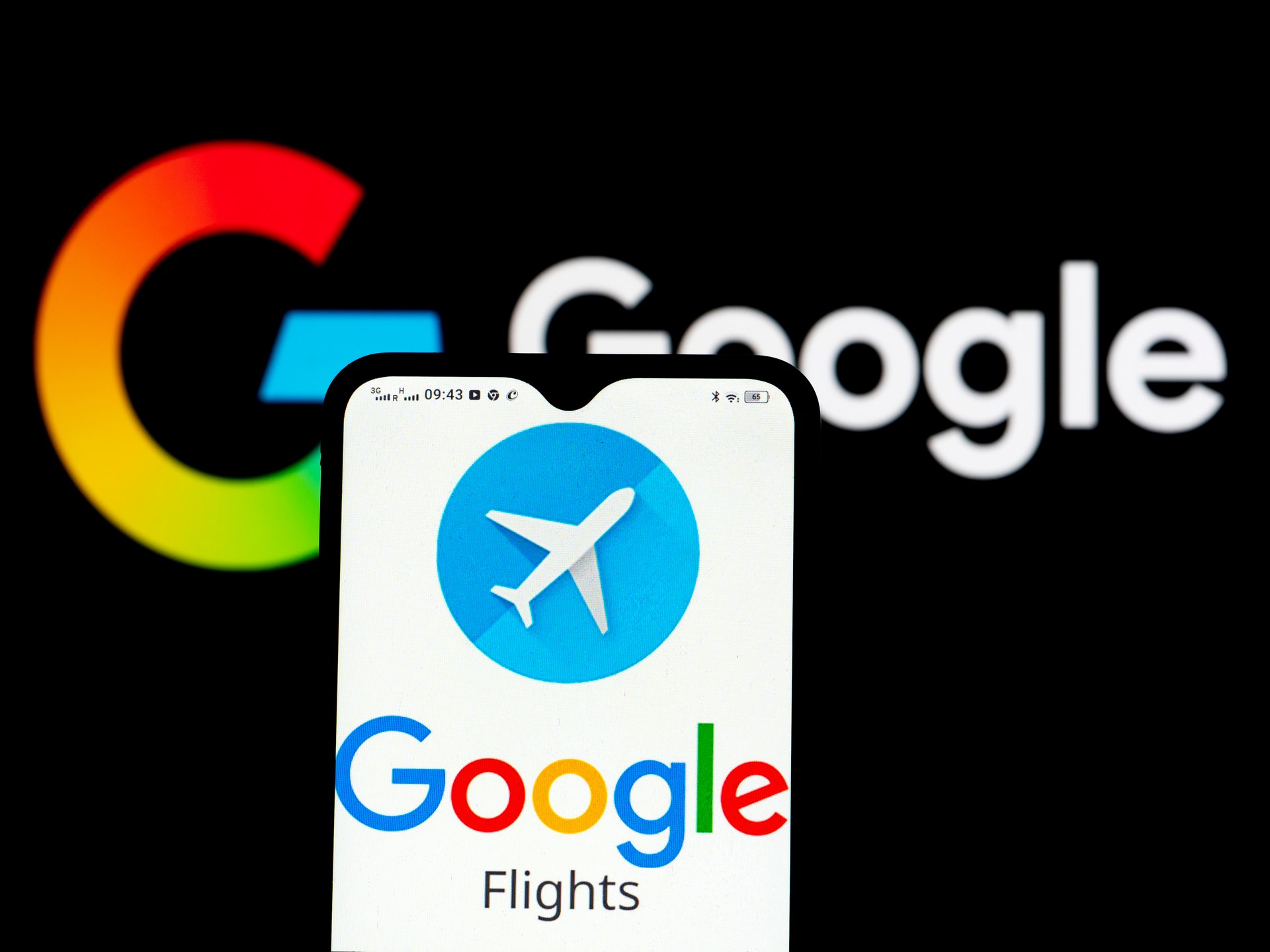
After losing an appeal on a $4.7 billion antitrust charge, the search giant offers up space to its rivals
Google has offered to showcase its rivals in its search results, in a proposal to European regulators, according to a new report. This comes one day after losing an appeal in a European court, and facing a US$4.7-billion antitrust fine for violating the EU’s Digital Markets Act (DMA).
Three months ago, the EU accused Google of favoring its own services like Google Flights and Google Shopping, arguably limiting consumer choice and stifling competition, and accused it of violating the DMA's antitrust regulation.
Reuters, citing documents, reports that Google proposed a vertical search service (VSS) that would feature “objective and non-discriminatory criteria” at the top of its search page, containing links to hotels, airlines, and restaurants. “Other VSS, which are specialized search engines within Google, would be ranked below but without a box unless users click on them,” reported Reuters’ Foo Yun Chee.
The unspoken assumption there is that Google’s current search results are neither objective or non-discriminatory.
The company has been a target on the continent since 2018, when it was fined more than four billion euros for abusing the dominance of its Android operating system. Google has been fined more than eight billion euros since then. President Donald Trump has expressed concerns over the EU’s crackdown on American tech giants, calling it “overseas extortion” and threatening tariffs in response.
"We do not agree with the (Commission's) preliminary findings' position,” said Google in the recent proposal to the EU. “But, on a without prejudice basis, we want to find a workable solution to resolve the present proceedings."
Google’s rivals have a chance to respond to the proposal at a July 8 meeting, while Google is still awaiting a decision in another EU DMA case relating to its digital ad business.
Apple and Meta were fined a combined $800 million in April for violating the DMA. Both are appealing the decision, and on Thursday were not facing sanctions for missing a 60-day deadline to comply with obligations.

Bill Pulte, director of the Federal Housing Finance Agency, demanded Powell's resignation in a Fox Business interview
President Donald Trump's extraordinary offensive against Federal Reserve Chair Jerome Powell is drawing back-up from another administration official.
Bill Pulte, director of the Federal Housing Finance Agency, pushed for Powell's resignation in a Fox Business interview on Friday. It follows an identical string of attacks from Pulte against the central bank chief on social media.
"[Powell] still has interest rates way too high and they're not reflective of the great work that President Trump has done," Pulte said. "Fed Chair Jay Powell either lower the rates or he needs to resign."
Pulte, who oversees housing giants Fannie Mae and Freddie Mac, cited a weak housing market in his case for lower rates. A lower interest rate reduces the cost of a 30-year mortgage.
“As Chairman of Fannie Mae and Freddie Mac, I can tell you that Jay Powell is hurting the housing market by being Too Late to lower rates. He needs to resign, effective immediately,” Pulte said in a Wednesday post on X.
Pulte's attacks align him with Trump's escalating attacks on the Fed, the independent central bank tasked with setting interest rates. The Fed left benchmark interest rates unchanged on Wednesday for the fourth meeting in a row. That development triggered intense backlash from Trump, who mused about installing himself as Fed chair. The President also called Powell "a stupid person" the same day.
Other hardline conservatives such as Sens. Rick Scott of Florida and Tommy Tuberville of Alabama have also called for Powell to resign.
It's unclear whether Pulte, a former private equity executive, secured a green light from the White House to wage a Trump-like offensive against the Fed. The White House and the FHFA did not respond to a request for comment. A spokesperson for the Federal Reserve declined to comment.
William English, a former top Federal Reserve official who is now a finance professor at Yale University, called it "pretty unusual" for administration official to publicly lambast the Federal Reserve. It might not be unprecedented, however.
English added even the appointment of a Trump-friendly Fed chair may not be enough to secure lower interest rates. Powell's term concludes in May 2026, and many of the 12 voting members of the Federal Open Market Committee will remain in their posts.
"The folks voting on policy next spring will be mostly the same as those who voted to keep policy unchanged this week," he said. "So even a Chair wanting easier policy to satisfy the President may well find it hard to deliver."
Other observers echoed concerns about the Fed being able to safeguard its political independence. "It is absolutely nothing new for a president to be critical of what a Fed chair is doing," Claudia Sahm, chief economist at New Century Advisors and a former Federal Reserve economist said. "But typically, those criticisms are behind closed doors."
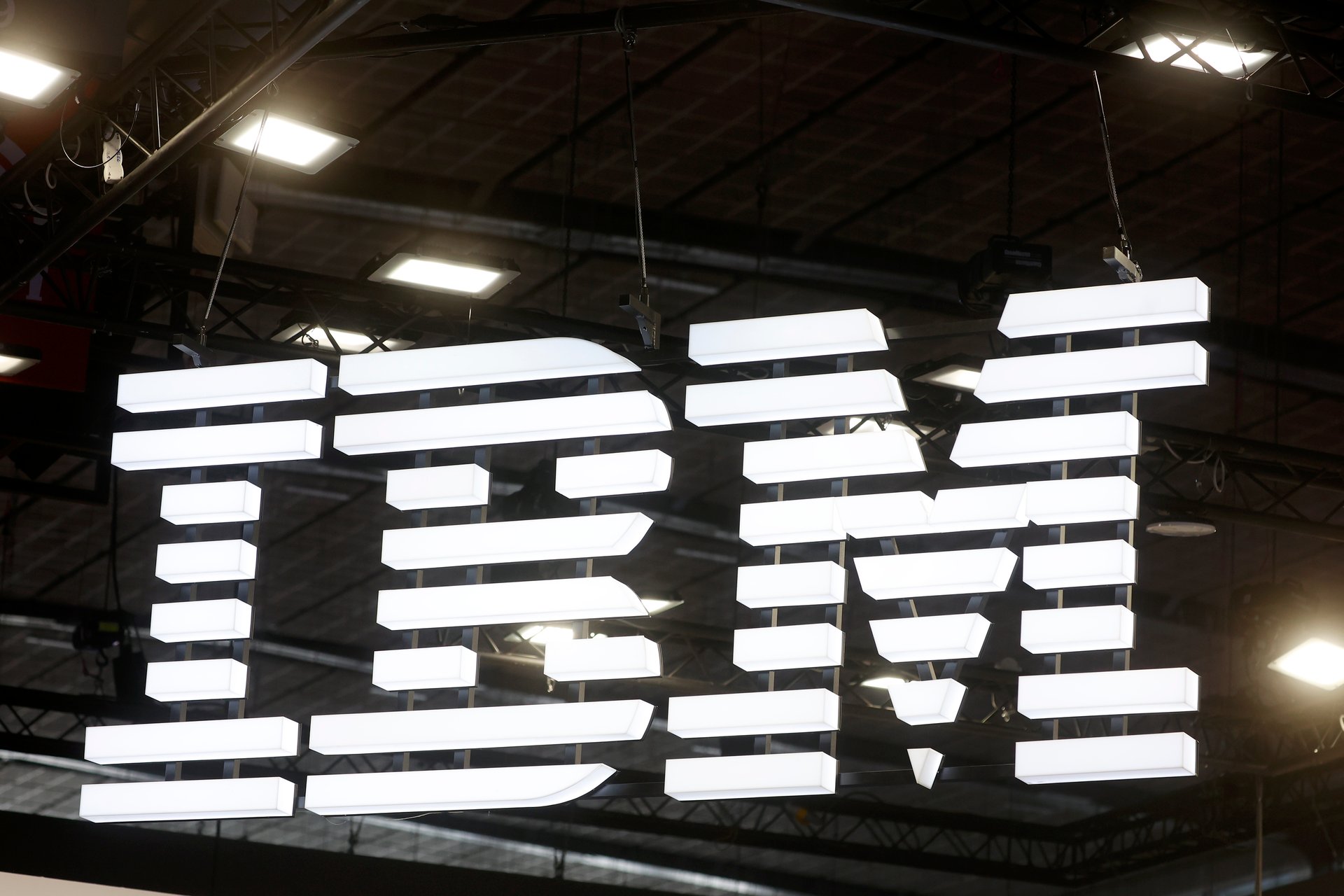
Wedbush analysts raised their price target for IBM stock from $300 per share to $325, calling the company "one of our top software names to own"
IBM might not be the first company that comes to mind when you hear “AI powerhouse.” But in 2025, Big Blue is busy showing it might just be the most underrated player in the AI arms race.
A new research note from Wedbush Securities is the latest vote of confidence. Wedbush analysts raised their price target for IBM stock from $300 per share to $325, calling the company “one of our top software names to own” and “still under owned.” IBM is one of the 30 companies in Wedbush analyst Dan Ives’ recently launched ETF that tracks AI stocks.
Despite a strong run this year — IBM stock is up about 28% so far in 2025 — Wedbush says the company is in the “early stages of a renaissance of growth,” powered largely by its $6 billion (and growing) generative AI business.
The bullish case hinges on what IBM has quietly built: an AI platform that’s already threaded through more than 70 enterprise workflows, from sales and finance to marketing and IT. Its flagship WatsonX platform, originally launched as a reimagining of the Watson AI brand, has evolved into a serious contender in the generative AI platform wars. IBM is at the forefront of quantum computing. And thanks to its hybrid cloud muscle (see: Red Hat and OpenShift), IBM is well-positioned to meet enterprise clients where they are, especially as analysts expect three-quarters of AI applications to run on containers by 2027.
“Built on a scalable and open foundation, IBM can continuously innovate at rapid pace while leveraging the developer community to capitalize on the current opportunity ahead across both hybrid cloud and AI,” Wedbush analysts led by Ives wrote in their note Friday.
That hybrid strategy is core to IBM’s thesis.
While Microsoft and Google battle it out over copilots and consumer hype, IBM is embedding AI into the nuts and bolts of enterprise software. According to Wedbush’s field checks, demand for IBM’s AI agents and developer tools is strong and accelerating. Clients are looking not just to experiment, but to operationalize AI at scale — and they’re turning to IBM to help map out those use cases.
Meanwhile, the company isn’t taking its foot off the gas.
IBM continues to integrate recent acquisitions such as HashiCorp to strengthen its developer ecosystem, and it’s placing long-term bets in frontier tech. The company recently unveiled its roadmap for “Quantum Starling,” a large-scale, fault-tolerant quantum computer that is expected by 2030. A chip, dubbed Quantum Nighthawk, is due later this year and promises meaningful gains in connectivity and fidelity — critical for real-world quantum applications.
“While still in the early stages of playing out," Wedbush analysts wrote, "IBM is taking this multi-billion-dollar quantum computing industry head-on by providing improved software and hardware capabilities to create increased use cases for various sectors.”
IBM chief executive Arvind Krishna’s long game appears to be positioning IBM not just as a consumer-facing AI brand, but as the backbone for the next generation of enterprise infrastructure. That’s not as flashy as chatbot demos or viral product launches — but it might be more lucrative.
The company is also bucking broader macro trends. While many tech firms have seen enterprise spending slow or shift amid budget pressures, IBM told investors that it hasn’t seen a pullback in customer appetite across its portfolio. Instead, the company says clients are leaning in — investing more deeply in cloud and AI as strategic priorities rather than line-item expenses.
If IBM’s momentum holds, the company could finally be entering the “growth company” phase it’s been chasing for over a decade. The AI boom may have many winners, but Big Blue’s steady, platform-centric approach has made it one to watch — especially if a $325 stock price target becomes less of a ceiling and more of a floor.
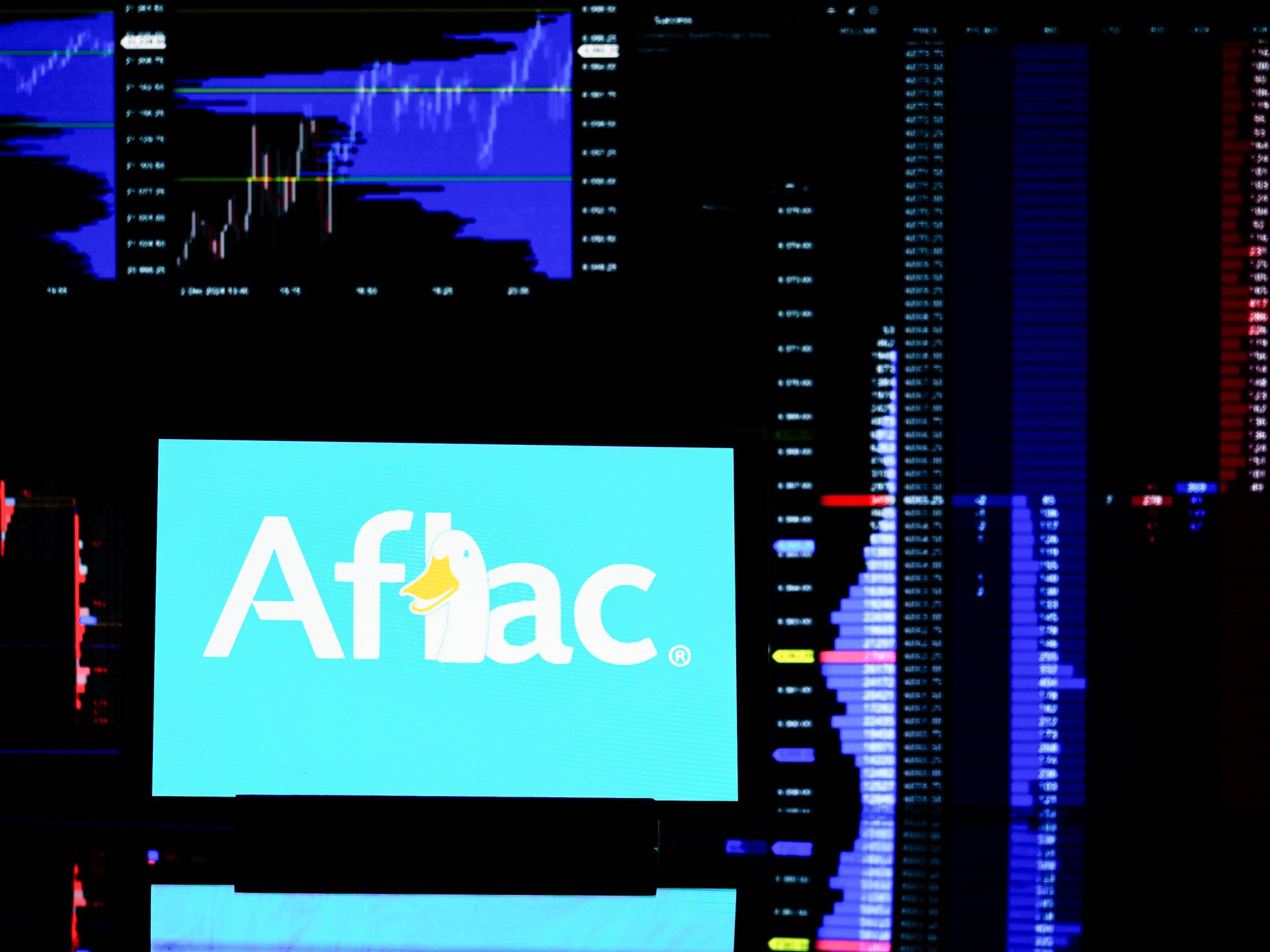
Attack is consistent with Scattered Spider, although no ransomware was involved and the breach was dealt with within hours
Health insurance giant Aflac revealed that it had been the victim of a cybersecurity breach on Friday, but that it had been dealt with within hours.
It’s the latest in a series of hacks targeting the insurance industry, following cyberattacks earlier this week on Erie Insurance, which suffered a weeklong outage, and Philadelphia Insurance Companies, also downed for days.
Aflac, which bills itself as the “No. 1 provider of supplemental health insurance products” in the U.S., has approximately 50 million customers. The company said that it was too early to tell how many users were affected in the breach.
Earlier this week, the Google Threat Assessment Group warned that “multiple intrusions in the U.S.” bear the marks of Scattered Spider, a ransomware group that targeted Marks & Spencer and other retailers, and is most famous for hacking Las Vegas casinos in September 2023.
Chief Google analyst John Hultquist told The Register, an enterprise technology news outlet, that the cybercrime group usually focuses on one sector at a time, and that “the insurance industry should be on high alert, especially for social engineering schemes, which target their help desks and call centers." Social engineering is when a hacker poses as a tech-support worker to acquire security information.
Aflac said social engineering caused their hack, although the breach did not involve ransomware, and they did not name Scattered Spider in their statement, instead referring to “a sophisticated cybercrime group.”
The largest breach in U.S. healthcare history happened in February 2024, to Change Healthcare, which affected more than million users, according to the Department of Health and Health Services. Stolen data in any such incident include not just medical records, but credit card numbers, Social Security Numbers, driver’s licenses, and more.
Aflac reassured its customers that the problem had been dealt with by cyber-incident response protocols, and that customer service would not be affected.
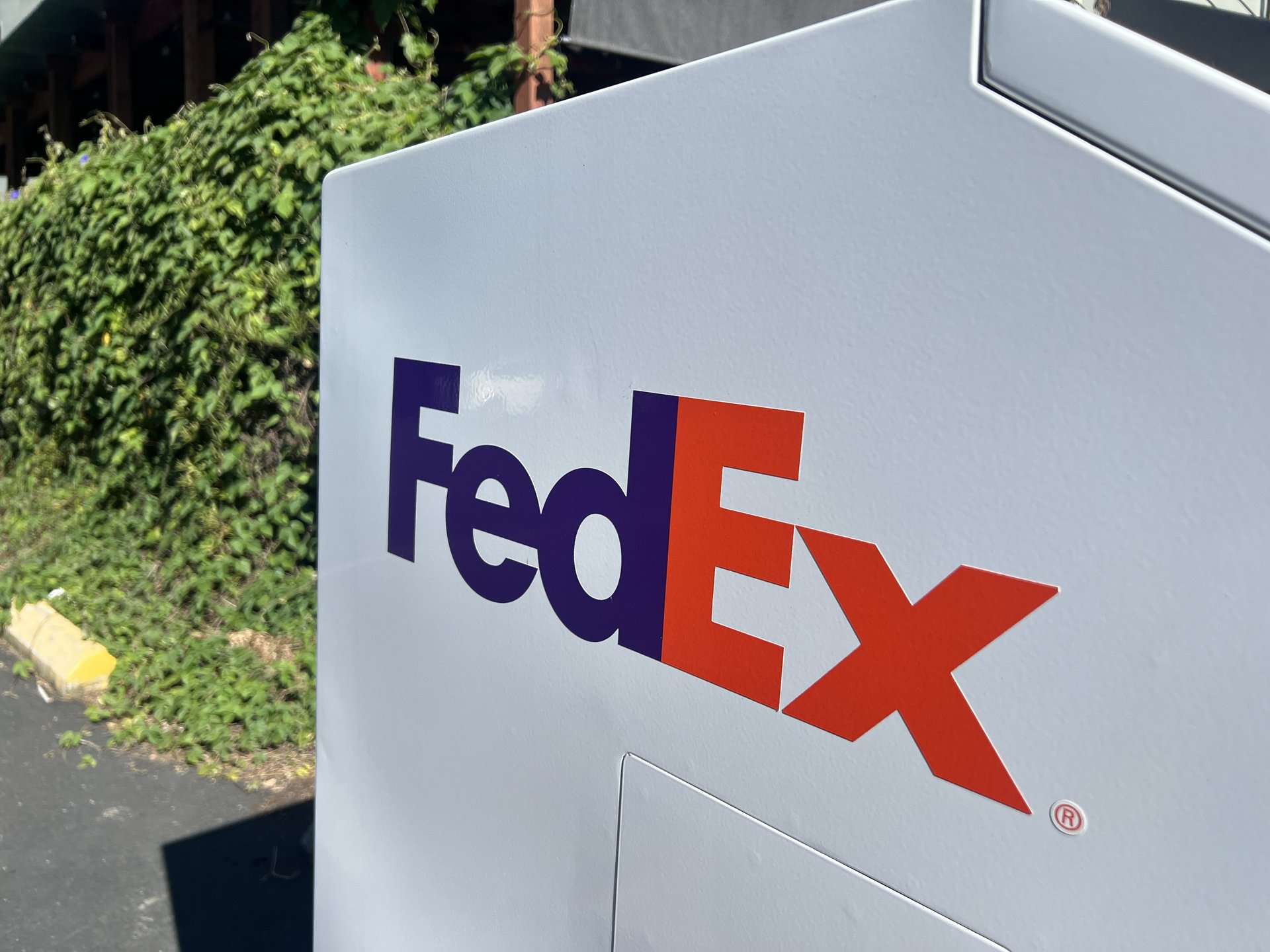
Investors will be watching the aftermath of the U.S. attack on Iran, Powell's testimony, an inflation gauge, and earnings from FedEx, Micron, and more
The Federal Reserve last week held interest rates steady and signaled two possible cuts by the end of the year, — though consensus looked to be narrowing, with more hawkish sentiment settling in. Kroger stock surged 10% after raising its full-year forecast, citing strength in pharmacy, eCommerce, and fresh food. The grocer also emphasized gains from its private-label strategy, though executives noted the broader macroeconomic environment remains uncertain.
Meanwhile, geopolitical tensions are only getting higher as the Israel-Iran war drags into a second week, with the U.S. joining the fray Saturday with attacks on Iran's nuclear facilities.
This week, investors will be watching Federal Reserve Chair Jerome Powell's congressional testimony, the PCE inflation gauge , and earnings from FedEx, Micron, Nike, Walgreens, and more.
Here's what to watch this week.
Monday brings S&P Global's flash PMIs for June, offering early insight into how manufacturing and services are holding up under relatively high interest rates. New home sales for May will shed light on whether housing demand is stabilizing amid the same trends, including relatively high mortgage rates. On the corporate side, earnings reports will trickle out from a small handful of companies, including FactSet, Commercial Metals, and KB Homes.
Tuesday will see Powell deliver semi-annual congressional testimony. It will also bring the release of the Conference Board’s June confidence index, widely expected to reflect ongoing unease around inflation and trade policy. The S&P/Case-Shiller home price index for April will offer a backward-looking snapshot of residential housing, and on the earnings front, results from FedEx and Carnival should offer insights into global shipping demand amid the trade wars and travel appetite among middle-income Americans.
On Wednesday, new home sales data for May will shed light on buyer demand and inventory conditions. Wednesday also brings some fresh data on trends in business investment with the release of May’s durable goods orders, an important indicator of corporate spending on equipment and infrastructure.
Earnings from Micron Technology will provide insight into semiconductor demand and the pace of the AI data-center boom. Expect results from Paychex, General Mills, Winnebago, and Levi Strauss & Co, too.
Thursday brings a dense lineup of economic indicators, headlined by the final estimate of first-quarter GDP. The second estimate already showed a 0.2% contraction, and any revision could cement concerns that the economy stumbled more than expected early in the year.
May’s durable goods orders will offer a window into trends in business investments, while the Chicago Fed’s national activity index gauges broad economic momentum. Additional reports on the goods trade balance, wholesale inventories, and pending home sales will help flesh out the picture. Weekly jobless claims will also be in focus as analysts watch for any cracks in the labor market.
On the corporate side, Nike and Walgreens will report earnings, providing insight into shoe, shampoo, and pharma demand.
Friday ends the week with the release of the core PCE price index for May, the Fed’s preferred inflation gauge and a key input for future rate decisions. Personal income and spending data will show whether consumers are fueling growth or pulling back. Also on tap is the University of Michigan’s final read on consumer sentiment for June.
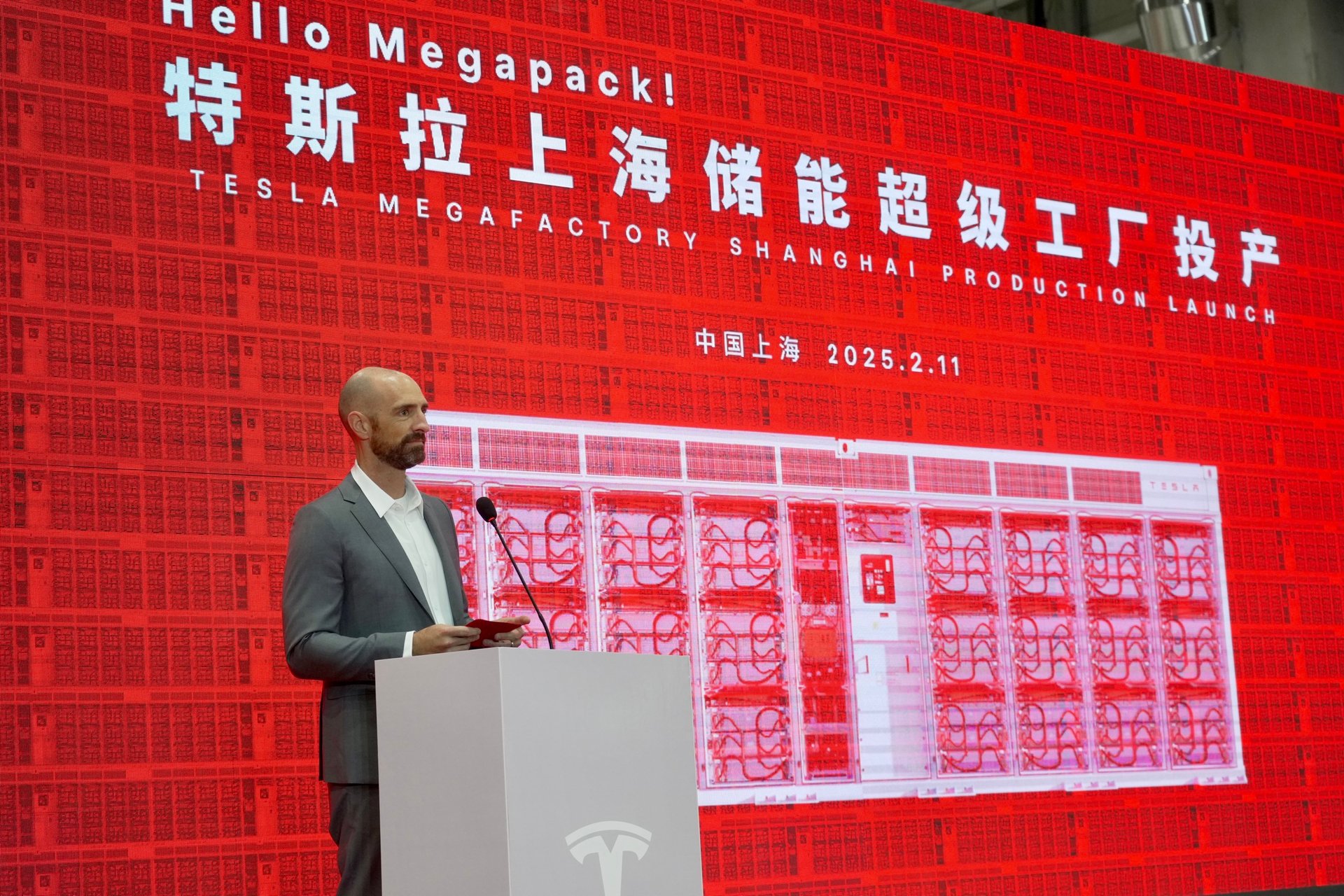
Amid a tense U.S.-China relationship, Tesla has agreed to a $557 million deal for a project that will reportedly be the largest of its kind
While the rest of the world focuses on Tesla’s robotaxis and Cybertrucks, Elon Musk is quietly building a power play — literally.
On Thursday, Tesla signed a roughly $557 million agreement with the Shanghai government to build its first large-scale energy storage station in China, marking a significant expansion of the company’s growing energy business. The facility will deploy Tesla’s Megapack batteries — giant lithium-ion units the size of shipping containers — to help stabilize China’s increasingly renewable-heavy power grid. Tesla said on Chinese social media service Weibo that the site will be the largest of its kind in China when it’s up and running.
The announcement isn’t just a regional milestone. The deal could be a glimpse into Tesla’s long-term future as an energy infrastructure company, not just an automaker.
The battery storage station will be co-located with Tesla’s Megafactory in Shanghai’s Lingang district, which began mass production of Megapacks earlier this year. Once complete, the facility will offer industrial-scale backup power to local energy providers — effectively acting like a giant battery bank that can charge during periods of low demand and discharge when the grid is under strain.
Each Megapack is capable of delivering up to one megawatt of power for four hours, enough to power hundreds of homes during peak demand. In bulk, they form the backbone of Tesla’s utility-scale energy solutions, which are already deployed in places such as California, Australia, and the U.K. But this Shanghai facility signals a major leap: integrating Megapacks directly into the fabric of one of the world’s largest power grids.
On Chinese social media platform Weibo, Tesla described the grid-side energy storage station as a “smart regulator” for urban electricity, capable of flexibly adjusting grid resources in real time to meet shifting demand — a particularly valuable asset as cities scale up intermittent power sources such as solar and wind. While the translation came via Google, the message was clear: Tesla isn’t just selling batteries; it’s positioning itself as an infrastructure player, helping future-proof megacities with intelligent energy systems.
This role — as a kind of software-defined shock absorber for the grid — could become Tesla’s most durable advantage in global energy markets. And in China, where grid modernization is both a national priority and a policy-supported opportunity, it gives Musk’s company a powerful foothold. The Shanghai battery power plant would “effectively solve the pressure of urban power supply and ensure the safe, stable, and efficient electricity demand of the city,” the company said.
The deal couldn’t come at a better time for China. The country is doubling down on wind and solar power, but these sources are inherently intermittent. Energy storage — particularly grid-scale — is increasingly critical to ensuring stable power delivery across sprawling provinces.
In Tesla’s first-quarter 2025 earnings report, the company said its energy storage deployments soared to 10.4 GWh, more than doubling year-over-year and setting a company record. Energy revenue jumped 67% to $2.73 billion, while gross profit hit an all-time high — making the energy division one of the few bright spots in an otherwise rocky quarter. The energy unit continues to outpace Tesla’s automotive business in margin performance, fueling some speculation that the company’s future may lie less on wheels and more on the grid.
During Tesla’s fiscal 2025 first-quarter earnings call, Musk said that “the energy business is doing very well,” adding that its growth would be long-term and substantial — expecting it to “eventually deploy terawatts of capacity per year.” In 2024, Musk said the energy storage business could someday outsize the car business: “It will increase — we actually know that it will — significantly faster than the car business, as we expected,” he said.
That may no longer be hypothetical.
The Shanghai deal isn’t just about deploying batteries. It’s about Tesla embedding itself deeper into the energy grid of the world’s largest clean power market. It also sets a precedent for similar infrastructure partnerships in Europe and the U.S., where grid modernization is also top of mind.
While Wall Street continues to watch Tesla’s vehicle deliveries and AI ambitions, the company’s batteries may be what keeps the lights on — both literally and figuratively.

Pavel Durov says Telegram will become a nonprofit foundation to ensure its independence and freedom of speech
Telegram CEO Pavel Durov has fathered more than 100 children, to whom he will leave his multi-billion-dollar fortune, he told the French magazine Le Point on Thursday.
The 40-year-old CEO said he only wrote his will recently, in which none of his children will receive any of his money until 30 years from now. “I want them to live like normal people, to build themselves up alone, to learn to trust themselves, to be able to create, not to be dependent on a bank account,” he said.
He has six children with three different partners, and more than 100 via sperm donation, in 12 countries. He says the will does not discern between any of them.
“They are all my children and will all have the same rights," he told the outlet. "I don't want them to tear each other apart after my death.”
Amid widespread concern about the inequality gap, Durov has chosen a rather personal form of wealth redistribution.
In a Telegram post last year, Durov said he first donated sperm 15 years ago to help a friend conceive. The head of the clinic told him he was “high-quality donor material” and told him it was his “civic duty to donate more sperm to anonymously help more couples.” Durov says he will “open-source my DNA so that my biological children can find each other more easily.”
His succession plan for Telegram is that it will become a non-profit foundation. “My goal is to ensure the platform's continuity,” he said. “I want it to continue existing independently, respectfully of privacy and freedom of expression."
Durov first made his fortune in 2013, when he sold his stake in the Russian equivalent of Facebook, VKontakte, and invested much of the proceeds in Bitcoin. He started Telegram that year with $200 million.
The Bloomberg Billionaires Index estimates his net worth at $13.9 billion, but Durov says he doesn’t draw a salary or dividends from his company. “Telegram is a source of expenses, not revenue,” he told Le Point, adding that he is the sole shareholder. A failed blockchain project, which was banned by the SEC, put the company in $2 billion of debt.
Telegram now has more than one billion monthly active users. It helped pioneer high-encryption messaging, beloved by privacy activists, but also popular with criminals. In 2024, Durov, an outspoken free-speech champion, was arrested in France on charges that Telegram was facilitating a variety of crimes, including child pornography, drug trafficking, and money laundering. “Just because criminals use our messaging service among many others doesn’t make those who run it criminals,” he told Le Point.
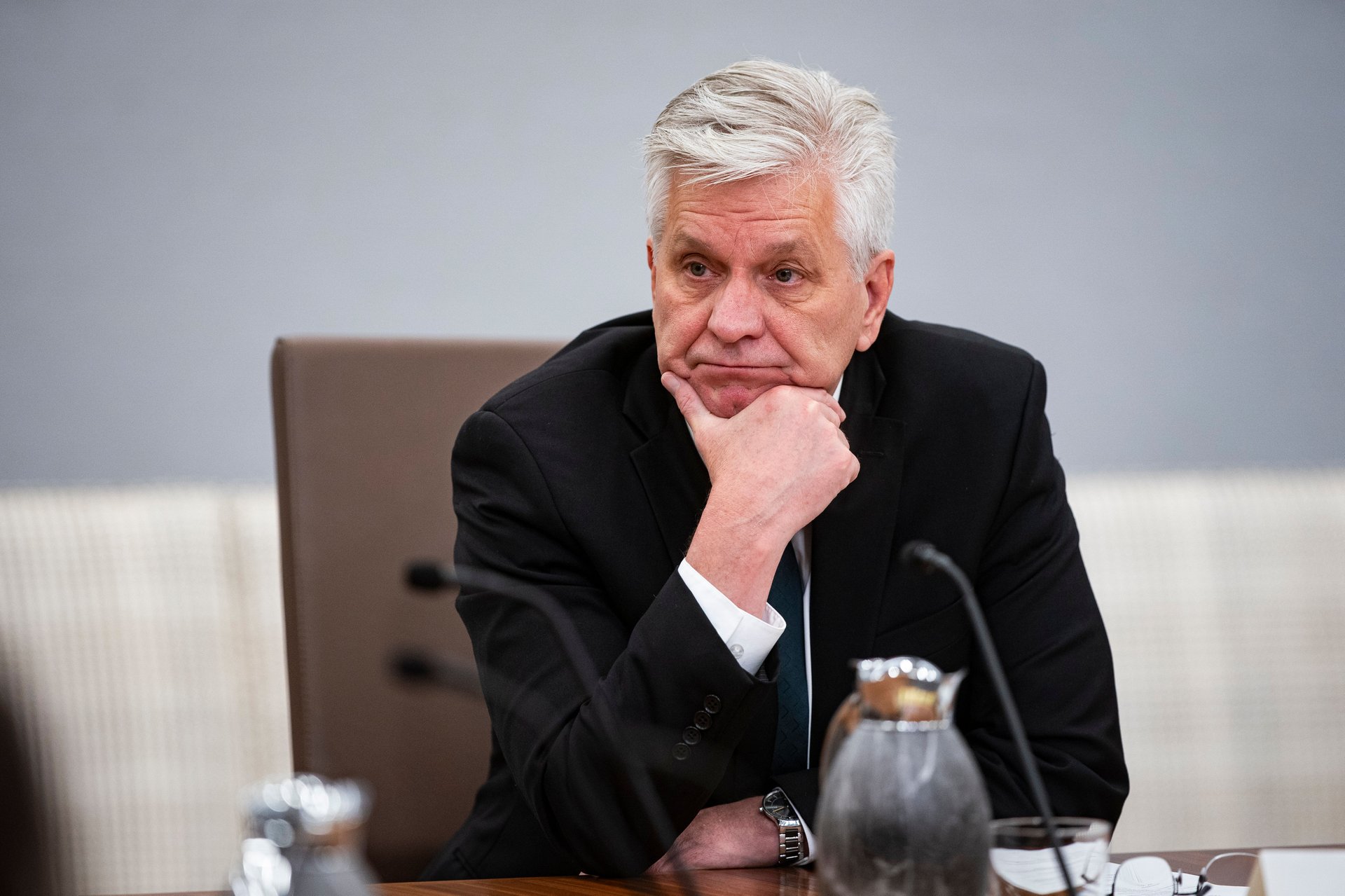
Federal Reserve Governor Christopher Waller argued for a July interest rate cut since he doesn't expect a tariff-induced inflation spike to linger
A top Federal Reserve official said Friday he believes the central bank should move ahead with an interest rate cut next month.
"I think we’re in the position that we could do this as early as July,” Federal Reserve Governor Christopher Waller said in a CNBC interview. “That would be my view, whether the committee would go along with it or not.”
Waller added he doesn't expect inflation that might stem from tariffs will reach a significant level or linger for a prolonged period.
"I don’t think we need to wait much longer, because even if the tariffs come in later, the impacts are still the same," Waller said. "It should be a one-off level effect and not cause persistent inflation.”
The Federal Reserve held interest rates steady after officials wrapped up a two-day meeting on Wednesday. The move left the benchmark rate at its current range of 4.25% to 4.50%.
"The unemployment rate remains low, and labor market conditions remain solid. Inflation remains somewhat elevated," the Fed statement said. It was the fourth meeting in a row in which Fed officials decided to sit tight and not change interest rates in either direction. They still signaled that two rate cuts were on deck for 2025.
President Donald Trump has not let up in his pressure campaign to prod the Federal Reserve to lower interest rates. On Wednesday, he said nothing he's done has successfully persuaded the central bank to lower interest rates.
"Now we have a man that just refuses to lower the Fed rate, just refuses to do it," he said, referring to Fed Chair Jerome Powell. "He's not a smart person. I don't even think he's that political. I think he hates me, but that's okay."

Elon Musk has been promising a robotaxi launch for years, and it's finally almost here. But there are significant caveats and limitations
After years of delays and bold promises, Tesla is preparing to launch its first robotaxi service on June 22 in Austin, Texas — though the rollout will be far more limited and cautious than CEO Elon Musk once envisioned.
The pilot launch is less of a truly autonomous debut and more of a tightly controlled test with serious investor implications. The rollout will reportedly involve just 10 to 20 Model Y SUVs operating within a geofenced area of Austin, with each vehicle carrying a human “safety monitor” in the front passenger seat. Tesla has also set up a teleoperations team to supervise the fleet remotely and intervene, if needed. The service will be invite-only at launch, with Tesla selecting influencers, investors, and customers to participate.
Rides will be available from 6 a.m. to midnight, but the robotaxis won’t go everywhere: Airport trips are off-limits, and routes will avoid complex intersections. Service may also be paused during bad weather. The goal, Tesla says, is to gradually scale the program while closely monitoring safety — a major concern for regulators and lawmakers.
The National Highway Traffic Safety Administration is still investigating Tesla’s Full Self-Driving (FSD) software, which has been linked to dozens of crashes and at least 13 fatalities. Critics have argued that Tesla’s marketing around FSD has overstated the system’s capabilities, which still require frequent human intervention and don’t meet the industry standard definition of autonomous driving.
In Texas, state lawmakers have formally requested that Tesla postpone the launch until rules governing autonomous vehicle operations take effect on September 1. So far, the company hasn’t indicated that it will delay its rollout.
Musk, who previously said Tesla would have 1 million robotaxis on the road by 2020, has acknowledged that this June launch won’t be fully autonomous. He described the rollout as an “early access” phase and said the company is being “super-paranoid” about safety — warning that the June 22 date could be pushed back as a result. He also teased a separate demonstration for later this month, where a Tesla would drive itself from the factory to a customer’s home by June 28. (Whether that trip involves a chaperone remains unclear.)
Wall Street, for its part, is watching closely — and betting big.
Tesla stock is up more almost 45% since April, thanks in part to robotaxi enthusiasm and Musk’s renewed focus on AI. Wedbush analysts have predicted that Tesla could expand robotaxi service to 25 U.S. cities within a year. Longtime Tesla bull Dan Ives, Wedbush’s managing director, said in a Friday note that Tesla’s “$1 trillion autonomous era” will begin with Sunday’s launch.
“Taking a step back we view this autonomous chapter as one of the most important for Musk and Tesla in its history as a company...as we believe the AI future at Tesla is worth $1 trillion to the valuation alone over the next few years,” Ives wrote. “There are countless skeptics of the Tesla robotaxi vision with many bears thinking this day would never come and now it’s about Musk and Tesla creating this foundation of autonomous growth for years to come and it all starts Sunday on Sixth Street in Austin.”
Still, Tesla’s stock is down almost 24% in the past six months and 16% year to date, making other analysts more skeptical. Some at Barclays and Baird have warned that Tesla’s software still trails competitors such as Alphabet’s Waymo and Amazon’s Zoox (which already offer fully driverless rides in multiple cities with more mature software stacks) and say Tesla’s robotaxi hype could set the company up for another reality check if early tests stumble.
Tesla’s pitch is that its approach will ultimately scale faster than anyone else’s. Millions of Teslas already on the road are logging miles and feeding data to the company’s AI. Tesla uses vision-only software, while rivals also rely on lidar and radar sensors and stick to pre-mapped routes, expanding methodically, city by city. But scale doesn’t guarantee autonomy.
Meanwhile, the competition is cruising ahead.
Waymo’s fully driverless robotaxis already operate in parts of Phoenix, San Francisco, and Los Angeles, with no human monitors and millions of real-world miles under their belt. Zoox is testing purpose-built vehicles with no steering wheel at all. Cruise, GM’s self-driving unit, is rebooting after a string of safety scandals but plans to return to the streets later this year.
Compared with these players, Tesla’s Model Y robotaxis — with a front-seat babysitter — could look more like a beta test than a breakthrough.
Still, if Tesla can execute a smooth (if modest) launch, it could be the first real proof point in Musk’s ambition to pivot the company from a carmaker to an AI platform — a shift he’s described as “transformational” to Tesla’s valuation. The company is betting its future not on selling vehicles to drivers, but on selling robotaxi rides to passengers — and data to itself. If it works, Tesla could lead the pack. If it doesn’t, it’ll be yet another missed milestone in a saga that’s been stuck in neutral for years.
And come June 22, we’ll find out which side of the road Tesla’s robotaxis will land on.